 Together with the group of photographers Meetup Photography Social Club Roma and UFR (Uscite fotografiche a Roma) we visited the Monte dei Cocci (mountain of roman fragments) and explored the area with a nice tour of the Testaccio district.
Together with the group of photographers Meetup Photography Social Club Roma and UFR (Uscite fotografiche a Roma) we visited the Monte dei Cocci (mountain of roman fragments) and explored the area with a nice tour of the Testaccio district.
The walk on a beautiful day in early September starts from the Chiesa di Santa Maria della Liberatrice (Church of St. Mary Liberator) that dominate the square of the Testaccio Giardinetti – a park resettled during the Rutelli town council is among the top five of the fallen monuments of Rome. It is, also, the only church of the neighborhood is best known for the Feast of Virgin Mary, in the last Sunday of May, an attraction for many people. A very important place of religion and a symbol of the district.
After a first visit inside the church, at 12, the appointment is at the entrance of the Monte dei Cocci, a place that you can only visit by organizing visits group and guided tours. So the large group of photographers traveling heads quickly along the road to reach the mountain. During the walking Osvaldi Sponzilli with our guide anticipates the history and origin of the mountain.
History of Monte dei Cocci
As it knows the mountain is formed by the overlap of the fragments that Roman deposited in this place, not far from the Tiber, where there was the docking of ships from Rome to the Empire. The neighborhood on this side of the Tiber, the ancient Roman port, became the place intended for commercial traffic and disposal of the products.
We talk about 25 million amphorae that were accumulated over the decades. Most of the amphorae were used to carry out oil, mainly to Spain, in Andalusia. But because they were then destroyed?
They were of “returnable bottles”, and having oil content could not be reused if not well cleaned, so the Romans to safeguard quality broke them and mingled them with lime and pozzolana (a hydraulic mortar that made it even more resistant the dough). Of course, the practical answer to sanitation and zoning laws: the dough, in fact, is kept clean throughout the service area for the disposal of used containers and were confined in a special place, a short distance away, but that does not hinders all other activities related to port traffic.
But when, in time, Ostia became the main port, the Tiber lost as its attractiveness. Fewer ships arrived and began the abandonment of the area for commercial reasons. From the Middle Ages onwards, the whole neighborhood was abandoned and the area became an increasingly less secure and infamous.
To the ‘500 and’ 600 it became the idea of using the Testaccio area as bacchanalia area and so the plane became a place of outings and carnival games until the early ‘900 … but the mountain remained always aloof completely abandoned.
Visiting Monte dei Cocci
The view from the mountain is expanding, with beautiful clear skies on the horizon the Castles. Sovrastiamo former slaughterhouse in Testaccio, built in the late 800 Ersoch architect to create the largest complex of slaughter and distribution of meat in the capital.
But returning with his eyes on high, from right to left we can embrace the whole city in a fast stroke. The ghetto and the Synagogue, the Aventine with the Church of the Priory of Malta, the Gasometro … until you return to the center of the mountain, to the Cross, the same that was the backdrop to Accattone death – image in Pasolini’s film.
Back down the mountain, back toward the Tiber. It crosses:
Porticus Aemelia soon after the Church of Santa Maria Liberatrice
The fountain along the river called the Fontanone di Testaccio
The tank consists of a sarcophagus and works from Africa and Asia, which were transported and often abandoned along this shore. We are near the old port, on the banks of the remains can still be seen, but you can not go and visit them.
On the other side of the Tiber there is Porta Portese, and to unite there is Sublicio bridge in the sixth century A.C. He linked the Etruscan area of Porta Portese with Emporio Square where there was the largest port of Ripa.
And leaving behind the Tiber, with its harbor and the white marble bridge, we find ourselves back across the Testaccio district again.
A neighborhood full of schools, both secular and religious: the late eighteenth century, in fact, was appointed as a teaching-educational site.
Among the buildings and architecture of the buildings, we come to the market, where among shops and stalls stands the Pool of Agrippina (in the Testaccio market).
Continuing the walk we enter one of the beautiful complex of the Institute public housing, with its courtyard – garden that welcomes the facades of continuous buildings surrounding it. And this is one of the main characteristics of the neighborhood. Urban planning which developed with buildings and building projects since the early years of the nineteenth century. It presents hives Roman structures built by the Institute for public housing.
Until you get to the buildings of Via Marmorata which give a more solemn and bourgeois connotation of the neighborhood. Although the road still retains the name of the imperial era, where Roman craftsmen worked the marble right there, a few steps from the ancient port of Testaccio.

Parole, lingua e linguaggio, arte e le nuove tecnologie sono quel filo rosso con il quale mi diverto a tessere le mie giornate. Innovazione e sviluppo di nuovi orizzonti gli spunti che mi fa piacere incontrare. Giornalista, editor, copy writer e content media. Dopo la laurea in Filosofia del Linguaggio e della Mente a Napoli, mi trasferisco a Roma dove mi specializzo in comunicazione per il web e i nuovi media e per diversi anni sono caporedattore del mensile “Next Exit, creatività e lavoro” approfondendo temi di economia della cultura. Ho curato la pubblicazione di diversi progetti editoriali, tra cui Young Blood, annuario dei giovani artisti italiani, e RomaCreativa, per fare una mappatura dei creativi italiani nel mondo e nella capitale.




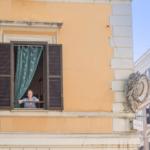






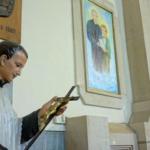
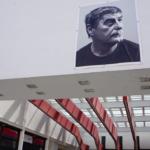




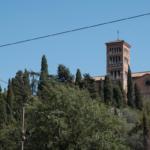
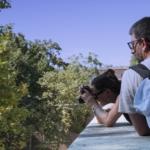
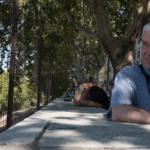
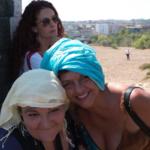


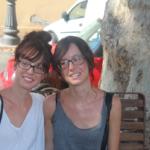



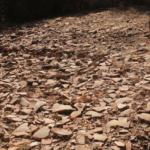
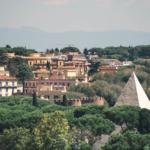
Vera Baze liked this on Facebook.